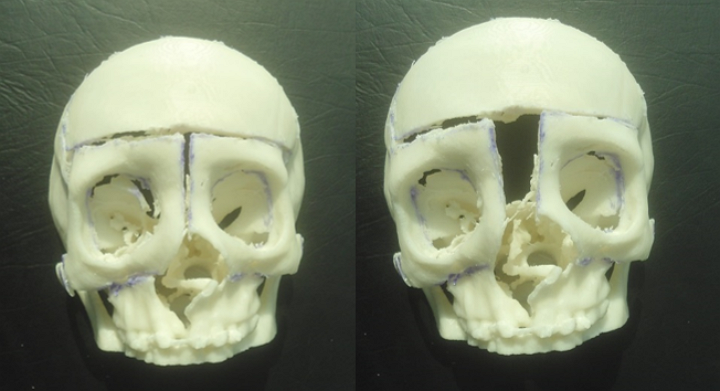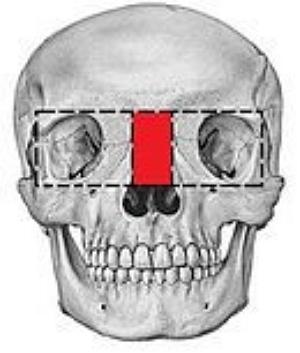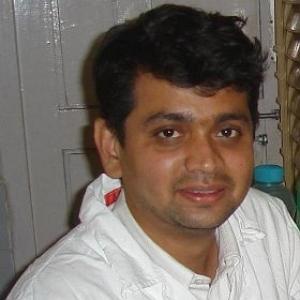Osteo3d Helps Doctors in India Correct Orbital Hypertelorism with 3D Printed Surgical Planning Model
 Orbital hypertelorism is a condition where there is an abnormally large distance between the eyes, and it refers specifically to the position of the bony orbits – or ‘eye sockets’ – which provide protection and support for the eyes lie within the skull.
Orbital hypertelorism is a condition where there is an abnormally large distance between the eyes, and it refers specifically to the position of the bony orbits – or ‘eye sockets’ – which provide protection and support for the eyes lie within the skull.
It can be due to abnormal development of the bones of the forehead and the base of the skull, can occur due to premature fusion of the bony plates of the skull, or can be caused by a variety of syndromes, such as Edwards, duplication, basal cell nevus, DiGeorge, and Loeys-Dietz syndromes, among other potential causes.
Enter Osteo3D, a Bangalore, India-based company backed by the df3d design factory, which specializes in 3D printing solutions for the healthcare field.
Dr. Sathish Vasishta, a craniomaxillofacial surgeon, and Dr. Derick Mendonca, a consulting plastic surgeon, used a 3D printed model to successfully plan and perform a surgical procedure at Sakra Hospital in Bangalore, which used a pair of techniques called ‘Box Osteotomy’ and ‘Facial Bi-Partition’ to take on the problem.
The doctors say the patient, Esther, was suffering from excess bone which had grown between the orbits. To correct the condition, it was necessary to remove bone on either side of the midline of the skull. And to complicate matters further, the patient also showed signs of what’s known as Orbital Dystopia, a condition where one bony orbit is not symmetrical with the other.
 Using CT scan data, a 3D printed model of the patient’s skull was created to help guide the surgeons and help them visualize the result of their work, and they say the use of the 3D printed model drastically reduced the operative time and ensured increased accuracy of the procedure.
Using CT scan data, a 3D printed model of the patient’s skull was created to help guide the surgeons and help them visualize the result of their work, and they say the use of the 3D printed model drastically reduced the operative time and ensured increased accuracy of the procedure.
According to the surgical team, using the model also helped them prevent mistakes during the operative procedure and allowed them to correctly design the “osteotomies” which would correct the Orbital Hypertelorism.
Before they entered the operating theater, the surgical team rehearsed the work by actually practicing the procedure on the 3D printed model. They say the pre-operative session allowed the doctors to accurately estimate what it would take to remove some 7.5 mm of bone on either side of skull’s midline in the horizontal plane and an additional 1.5mm of bone in vertical plane of the skull surrounding the right bony orbit.
By using the techniques they developed in the rehearsal session, and moving the bony compartment of the orbit to the midline on the model, the doctors achieved what’s called Orbital Symmetry for the patient on both the horizontal and vertical planes of the skull. Esther’s surgery was exceptionally complicated and took some 7.5 hours with several teams of doctors at work. And it was a critical need as Esther had been bullied and made fun of at school due to her appearance. Dr. Mendonca and Dr. Vasishta added that using the Osteo3d 3D printed medical models was critical to the success of this major craniofacial surgical process.
Esther’s surgery was exceptionally complicated and took some 7.5 hours with several teams of doctors at work. And it was a critical need as Esther had been bullied and made fun of at school due to her appearance. Dr. Mendonca and Dr. Vasishta added that using the Osteo3d 3D printed medical models was critical to the success of this major craniofacial surgical process.
Do you have any other stories we should know about where 3D printing technology has been used to help patients and doctors? Let us know in the Hypertelorism With 3D Printed Modeling forum thread on 3DPB.com.
Subscribe to Our Email Newsletter
Stay up-to-date on all the latest news from the 3D printing industry and receive information and offers from third party vendors.
You May Also Like
Printing Money Episode 17: Recent 3D Printing Deals, with Alex Kingsbury
Printing Money is back with Episode 17! Our host, NewCap Partners‘ Danny Piper, is joined by Alex Kingsbury for this episode, so you can prepare yourself for smart coverage laced...
Insights from Cantor Fitzgerald on AM’s Q1 2024 Landscape
A recent survey by Cantor Fitzgerald sheds light on the persistent challenges within the additive manufacturing (AM) industry in the first quarter of 2024. Based on responses from 38 industry...
3D Printing Financials: Xometry’s Scaling up and Strong Start to 2024
Xometry (Nasdaq: XMTR) kicked off 2024 with strong results, boosting its marketplace and technology to new heights. Both revenue and gross margin soared, fueled by an expanding global network of...
3D Printing Financials: Desktop Metal Targets Recovery Amid Net Losses and Revenue Downturn
Despite facing a decline in revenue and the persistent challenges of a tight economic climate, Desktop Metal (NYSE: DM) is making strides toward operational efficiency. The first quarter of 2024...

































